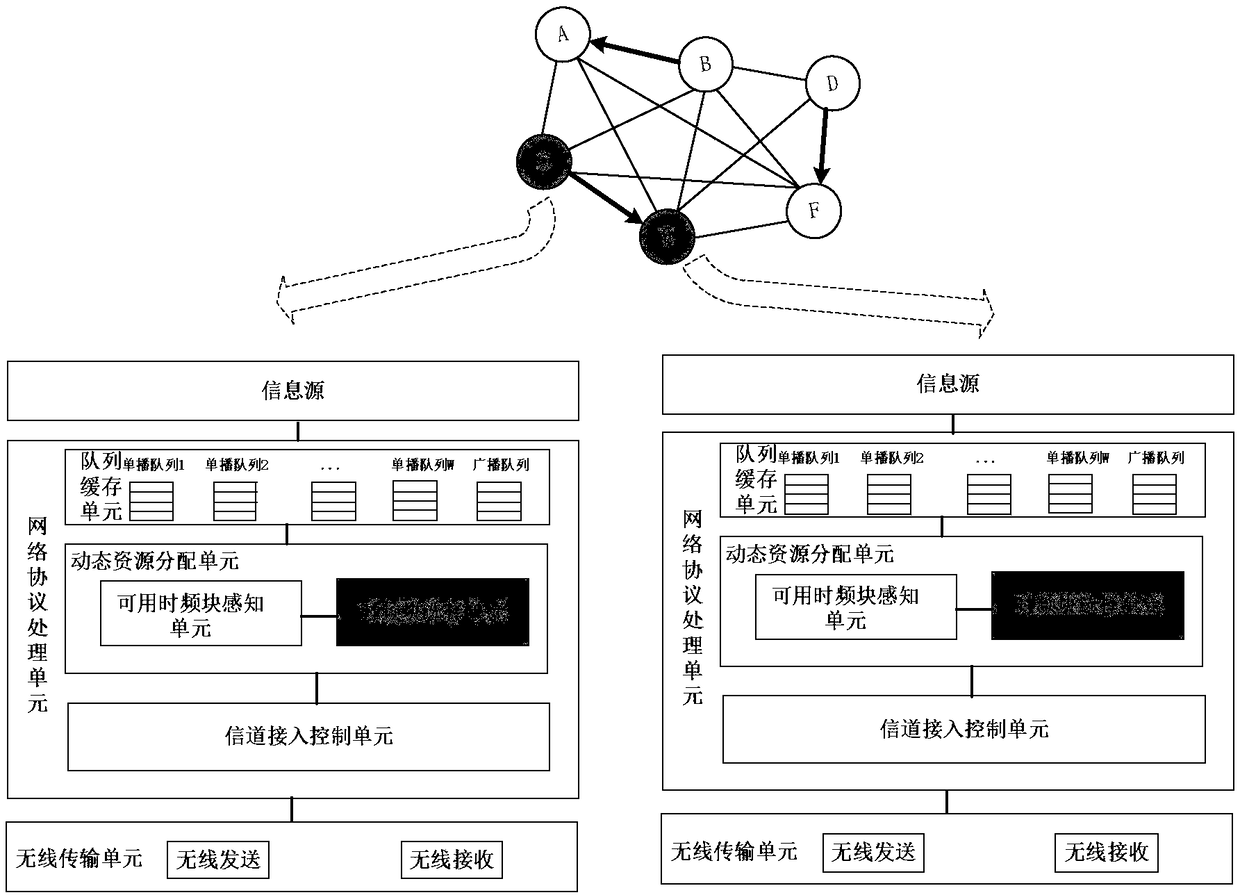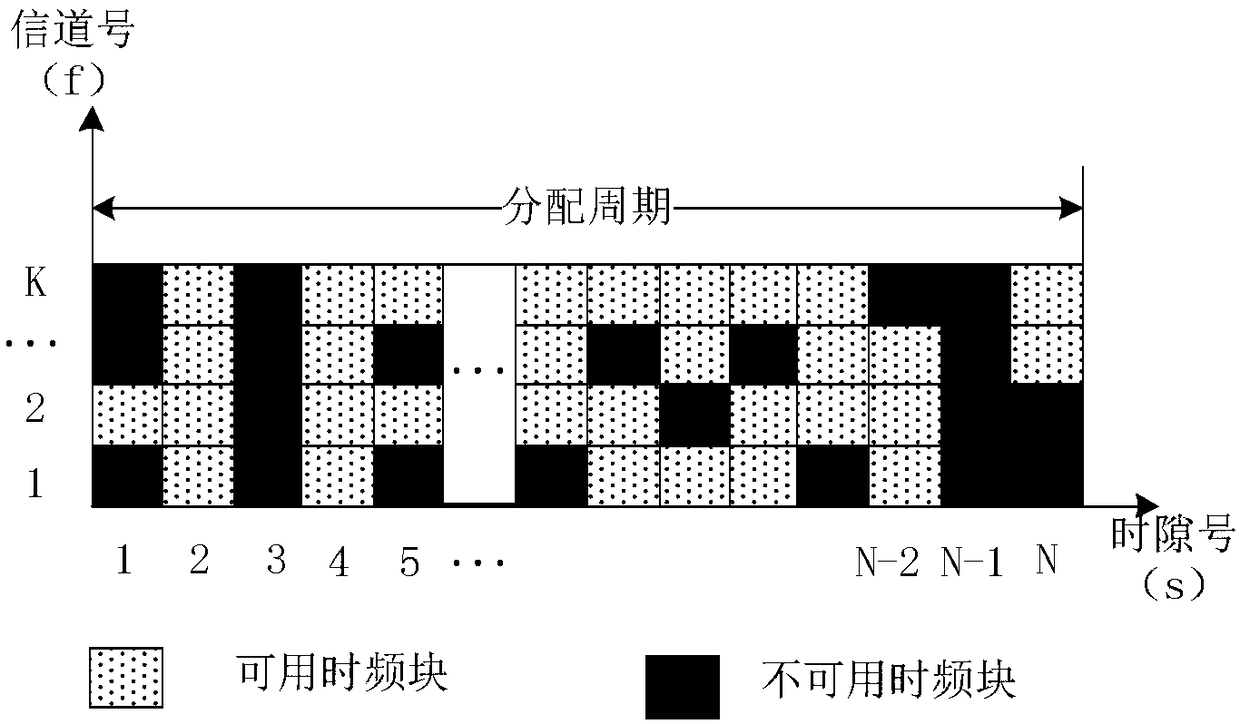A method for adaptively selecting time-frequency blocks of a multi-channel ad hoc network
A self-organizing network and self-adaptive selection technology, applied in transmission path sub-channel allocation, wireless communication, multiple use of transmission path, etc. The effect of improving resource utilization and improving network throughput
- Summary
- Abstract
- Description
- Claims
- Application Information
AI Technical Summary
Problems solved by technology
Method used
Image
Examples
Embodiment Construction
[0027] see figure 1 . A multi-channel ad hoc network has two or more communicating nodes, such as Figure 7 , Figure 8 In the communication nodes A, B, C, D, E, and F shown, each communication node communicates with each other through multiple channels connected interactively, and each communication node includes three series of information source units, network protocol processing units and wireless transmission units. A functional unit, the network protocol processing unit includes a serial queue buffer unit, a dynamic resource allocation unit and a channel access control unit, wherein the queue buffer unit includes a unicast buffer queue 1, a unicast buffer queue 2, ... a unicast buffer queue W Multiple buffer queues such as broadcast cache queues; the dynamic resource allocation unit includes a series-connected available time-frequency block sensing unit and time-frequency block selection unit; the wireless transmission unit includes a wireless sending unit for wireless...
PUM
 Login to View More
Login to View More Abstract
Description
Claims
Application Information
 Login to View More
Login to View More - R&D
- Intellectual Property
- Life Sciences
- Materials
- Tech Scout
- Unparalleled Data Quality
- Higher Quality Content
- 60% Fewer Hallucinations
Browse by: Latest US Patents, China's latest patents, Technical Efficacy Thesaurus, Application Domain, Technology Topic, Popular Technical Reports.
© 2025 PatSnap. All rights reserved.Legal|Privacy policy|Modern Slavery Act Transparency Statement|Sitemap|About US| Contact US: help@patsnap.com



